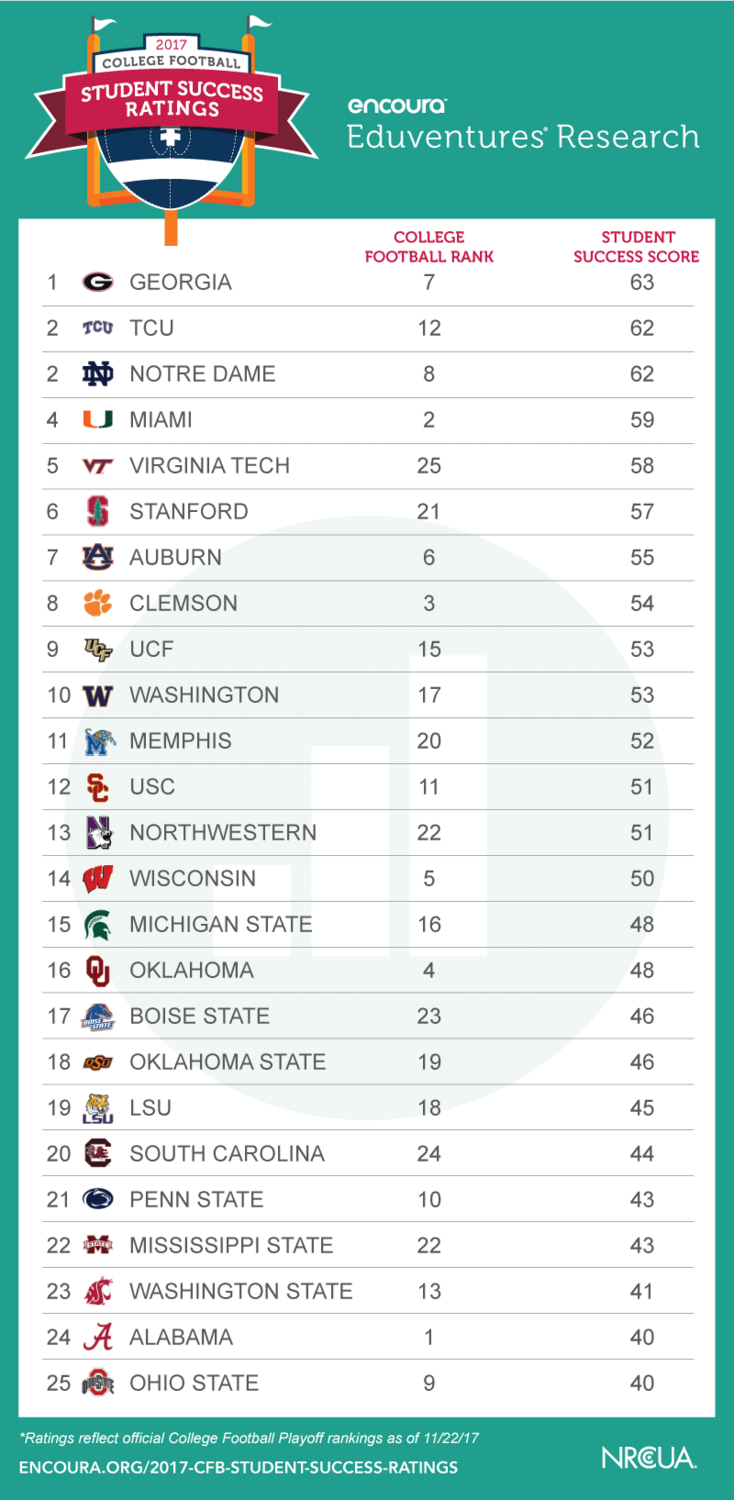View our previous ratings from 2016, 2015, and 2014.
In the 11th week of college football, the playoff picture is beginning to take shape. Some of the usual suspects are favored to make it to the semifinal bowl games and get a crack at winning the national championship in Atlanta. But what if these teams were judged by a different standard? If they were ranked on their student success record rather than on football, would they still come out on top?
In football, competition dictates that only one team can win. For undergraduate students at these storied institutions, theoretically, all students can win, yet, in practice, they don’t. Which of our finest NCAA football teams play a good game when it comes to student success?
Eduventures took a look at the most current College Football Playoff Rankings at the time of publication (week 11). Here’s how the playoffs and the National Championship would play out if we ranked each top-performing football university’s performance in order of its Eduventures 2017 Student Success Score.
 Keep in mind the key aspects of our student success ratings system:
Keep in mind the key aspects of our student success ratings system:
 Keep in mind the key aspects of our student success ratings system:
Keep in mind the key aspects of our student success ratings system:
- It’s built on a combined score of first-year retention and six-year graduation rates
- An absolute high score doesn’t make you an automatic winner
- You get points for scoring better than your predicted score based on your institutional characteristics
- You get points for demonstrated improvement on retention and six-year graduation
- All scores are combined to create an index that ranges from 0 to 100
- It’s a score that’s designed to focus you on your own performance

